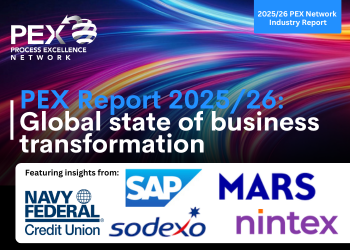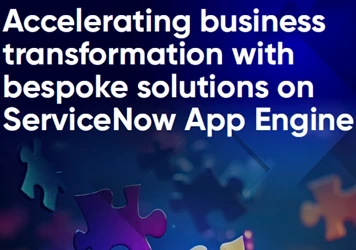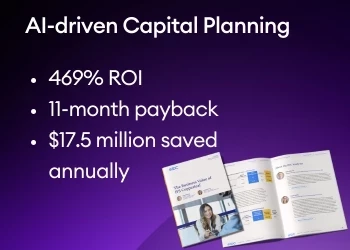Inside NASA’s approach to revitalizing and transforming organizational culture
Dr. Phillip Meade, a former associate director of spaceport integration and services at NASA, talks about driving cultural change, transformational leadership and continuous reinvention
Add bookmark
On February 1, 2003, the Space Shuttle Columbia disintegrated as it returned to Earth, killing all seven astronauts on board. In the wake of this devastating event, NASA underwent a period of deep introspection that ultimately brought about sweeping changes aimed at building a culture of safety.
To spearhead this cultural transformation, NASA enlisted Phillip Meade, Ph.D, the former associate director of spaceport integration and services at NASA Kennedy Space Center. Leveraging a behavioral science-based approach, Dr. Meade helped NASA understand how its once celebrated culture inadvertently discouraged dissent, impaired the flow of information and downplayed risk.
PEX Network had the pleasure of interviewing Dr. Meade, who is now the co-owner and COO of Gallagher Edge, a consulting firm, at OPEX Week. In addition to discussing how NASA developed its culture of safety following the Space Shuttle Columbia disaster, he also shares how he helped spearhead Kennedy Space Center’s transformation into a commercial space center.
Join the PEX Network community

Don't miss any news, updates or insider tips from PEX Network by getting them delivered to your inbox. Sign up to our newsletter and join our community of experts.
Learn MorePEX Network: Could you tell us a bit about NASA's culture when you first arrived and how it evolved in the years following the Space Shuttle Columbia disaster?
PM: Following the Space Shuttle Columbia disaster, the Accident Investigation Board found that the culture of NASA was as much to blame for the accident as any technical issue.
The thing that scared me the most when I was asked to lead the culture change at Kennedy Space Center was the fact that I thought it had an awesome culture. I had no idea where to start because I loved working at NASA. We were doing things that had never been done before and everyone was great to work with.
What I came to understand, however, is that organizational culture is created by the interaction of multiple factors such as organizational beliefs, internal politics, external politics, a person’s sense of self and budgetary pressures.
The people at NASA love what they do, which, on its own, is a wonderful characteristic. When you combine that passion with political pressure, however, it can create an emergent culture where saving the program is valued over safety.
If a project does not hit certain milestones, it will be canceled. To avoid this, people subconsciously accepted more risk.
The reasons behind this behavior have a lot to do with self-perception. For example, engineers often define themselves as being data-oriented, data-driven. Though this sounds good on the surface, this fragility in the self-concept is a problem because if an engineer thinks something is wrong but lacks the data to prove it, they may not have the psychological safety net to stand up and say something.
My focus was on how organizational culture shapes the way employees define themselves. Our goal was to build a culture of safety where people felt comfortable speaking out without fear of political ramifications.
This is why I am so passionate now about about bringing these lessons in transformational leadership to other organizations — because if it can happen at NASA, it can happen anywhere.
PEX Network: Could you give us an example of a moonshot operational excellence project that you successfully launched while at NASA?
PM: Immediately following the Columbia accident, the President of the United States and Congress decided to phase out the existing space shuttle program and reallocate NASA’s focus to building a new, deep space vehicle capable of traveling to Mars.
At that time, Kennedy Space Center was the hub for all shuttle flights. We were the ones refurbishing and launching shuttles. This new space program, however, eliminated the need for both of those things. Not only were we a decade away from having a ship to launch, but these new vehicles would require less refurbishment. We were faced with the possibility of near extinction.
We had a choice: we could either choose to accept that fate and let these world-class, one-of-a-kind facilities either be mothballed and bulldozed. Or we could completely transform ourselves into a different organization.
We chose the latter and decided to become a multi-user space port. Instead of being primarily devoted to serving a single giant NASA program, we had to transform into a commercial space center that launches vehicles for multiple entities. We also decided to lease out our incredible facilities, offering others the opportunity to help the US grow and innovate in new ways.
That was a long, long road but we were successful. Last year we had 57 launches in the Kennedy Space Center, Cape Canaveral combined area alone. SpaceX and Blue Origin are all operating at Kennedy Space Center, as are Boeing and Sierra Nevada. We also transformed the shuttle runway and are using it to run a variety of different tests.
PEX Network: What were three ingredients of that success?
First of all, and I feel almost silly saying it, but persistence was key. A lot of people did not get the vision. They thought transforming into a commercial space center was at odds with NASA’s mission. People also worried that nobody would want to come and work at a government facility. There were so many different things that we had to change such as policies, processes and funding streams, but we succeeded because we were persistent.
Secondly, maintaining a collaborative intent throughout was critical to success. When you are trying to lead transformational change, it can be easy to allow yourself to become triggered by the defensiveness of others and those who resist change. When people challenge or question your vision, it can feel like they are attacking you or your ideas. In reality, they are just focused on protecting themselves. By making it clear that you want to collaborate with them regardless of how they feel about you and what you are trying to do, you can build inroads with people.
One technique I use is interest-based negotiation, a problem-solving approach that emphasizes mutual gain. The goal is to interweave individual interests with organizational objectives to co-create solutions with those who are resistant at first.
The third ingredient is casting a compelling vision. Transforming into a multi-user space port required extensive infrastructural changes. We had to rethink our policies and processes, but much of our work was invisible to the average employee. While this conversion was years in the making, some people were still caught off guard when we announced the first commercial launch.
This is why you cannot over communicate – especially when it comes to explaining why you are transforming and how it will benefit everyone. It is critical to have buy-in from the C-suite, while your vision for transformation should be built, evolved and owned by as many people as possible.
PEX Network: How do you define transformational leadership and what advice do you have for those looking to cultivate those skills?
PM: Transformational leaders help others become the best version of themselves and, thus, take their organizations to the next level of performance.
To cultivate transformational leadership skills, it is important to study followers. Most people study and try to emulate individual charismatic leaders, but I argue that we should be looking inward to cultivate our own unique leadership characteristics that inspire others to follow us.
When people feel safe, when people feel trusted, they will follow. To become that kind of a leader, you want to truly know yourself, the core of who you are, and how to express that authentically. Understanding how people feel about themselves in your presence and why someone might follow you is also paramount to developing the self-awareness needed to be a transformational leader.
If you can consistently show up with a combination of self-acceptance, self-awareness and self-accountability, you have already taken that first step into becoming a transformational leader.
PEX Report 2025/26: Global state of business transformation

The PEX Report 2025/26 examines the results of our annual survey of more than 200 professionals with insights from more than a dozen industry business and thought leaders from across the globe. Contributors include leaders from Mars, Navy Federal Credit Union, Pacific International Lines, Sodexo, SAP and Nintex!
Explore why true business transformation is not a singular project but an ongoing journey, one that requires visionary leadership, cross-functional collaboration, technological prowess and an unrelenting commitment to agility and innovation. Those that embrace this evolution holistically are not just surviving the future, they are shaping it!
Download Now























